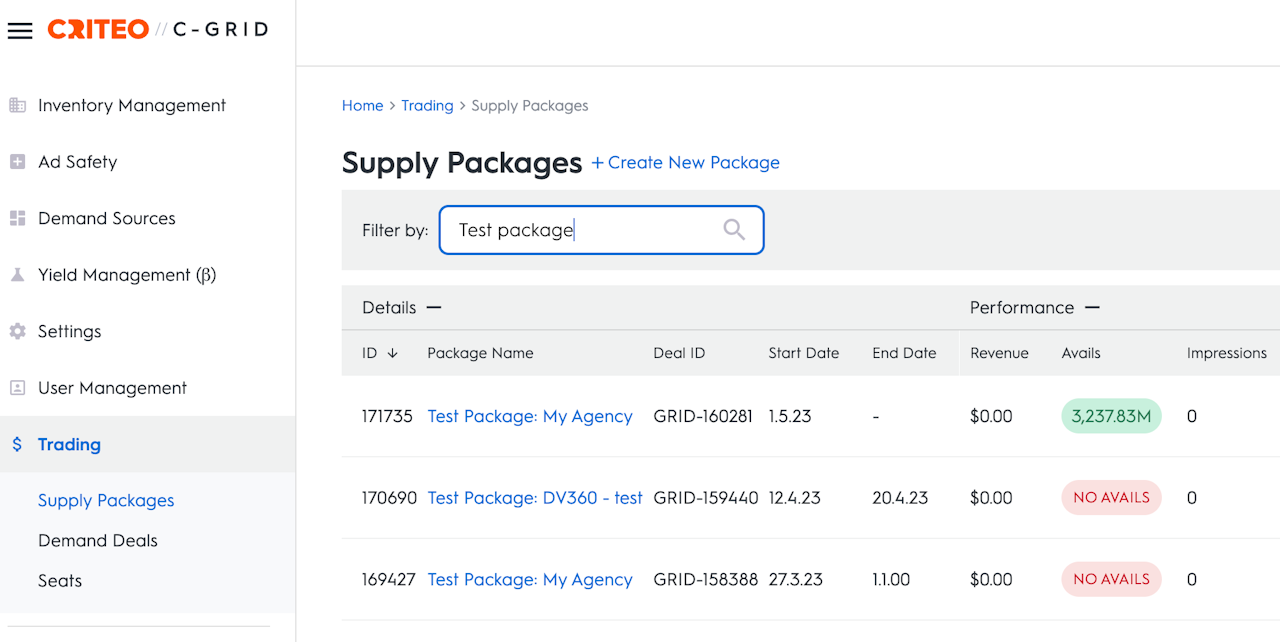
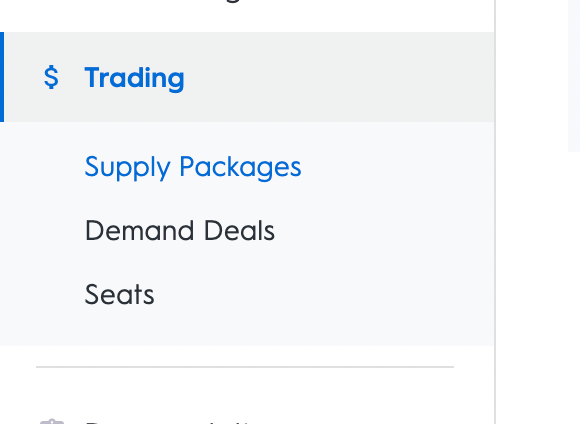

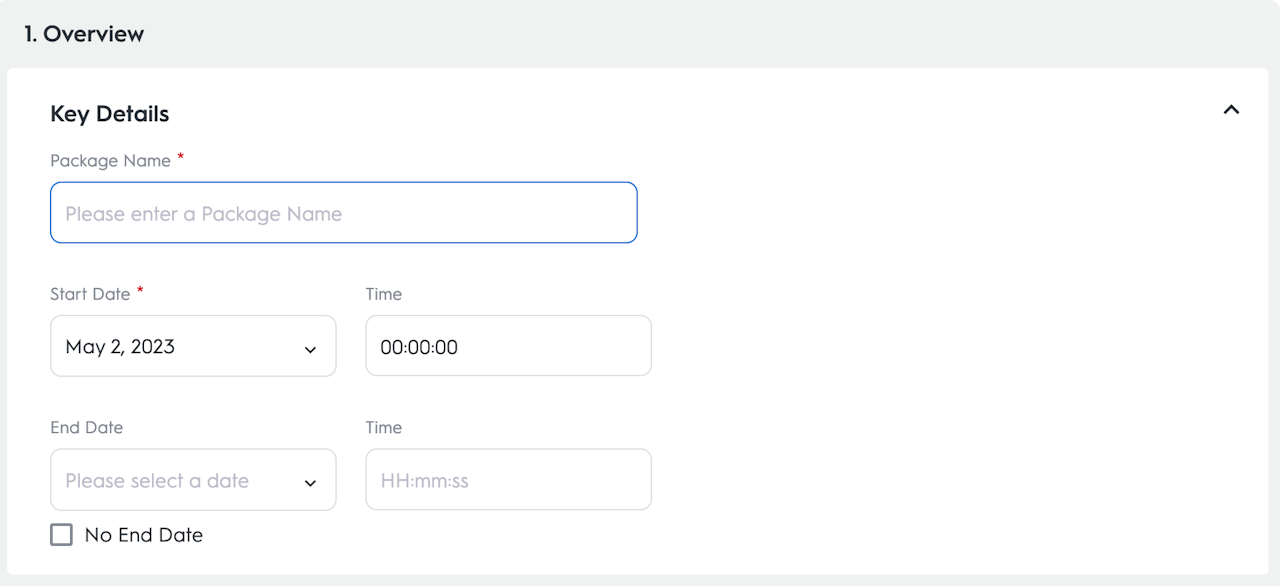

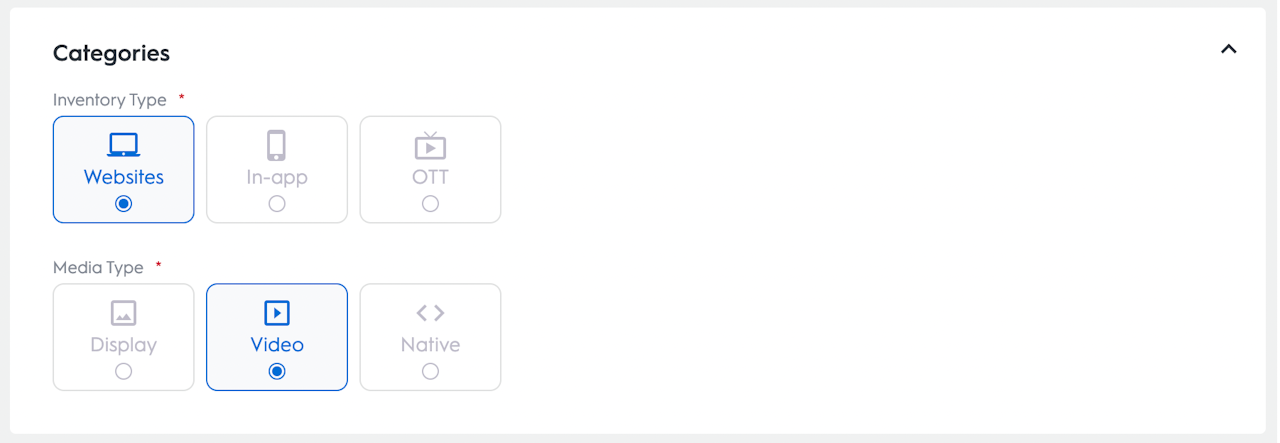
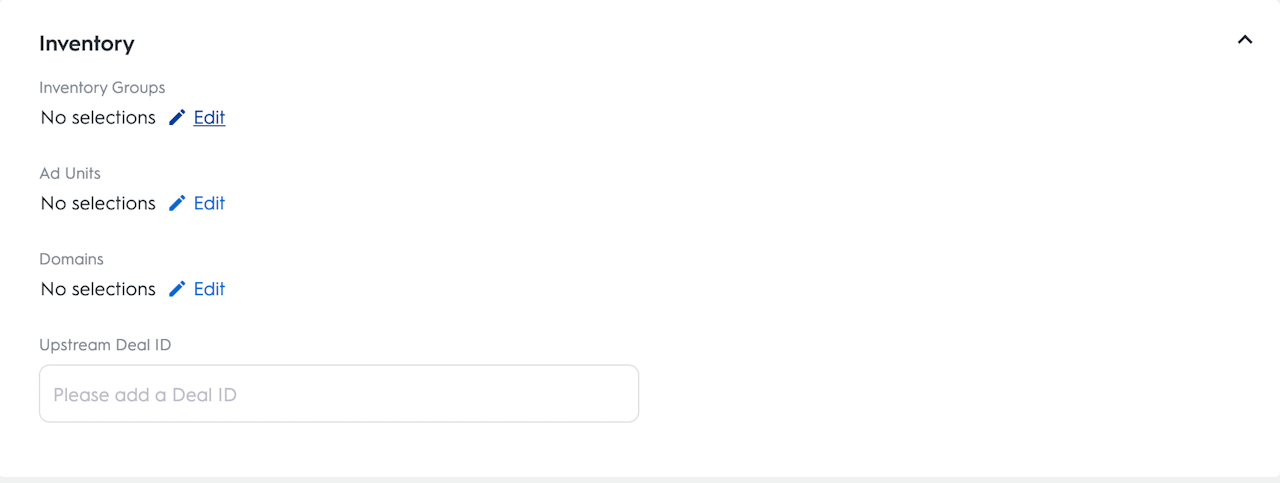
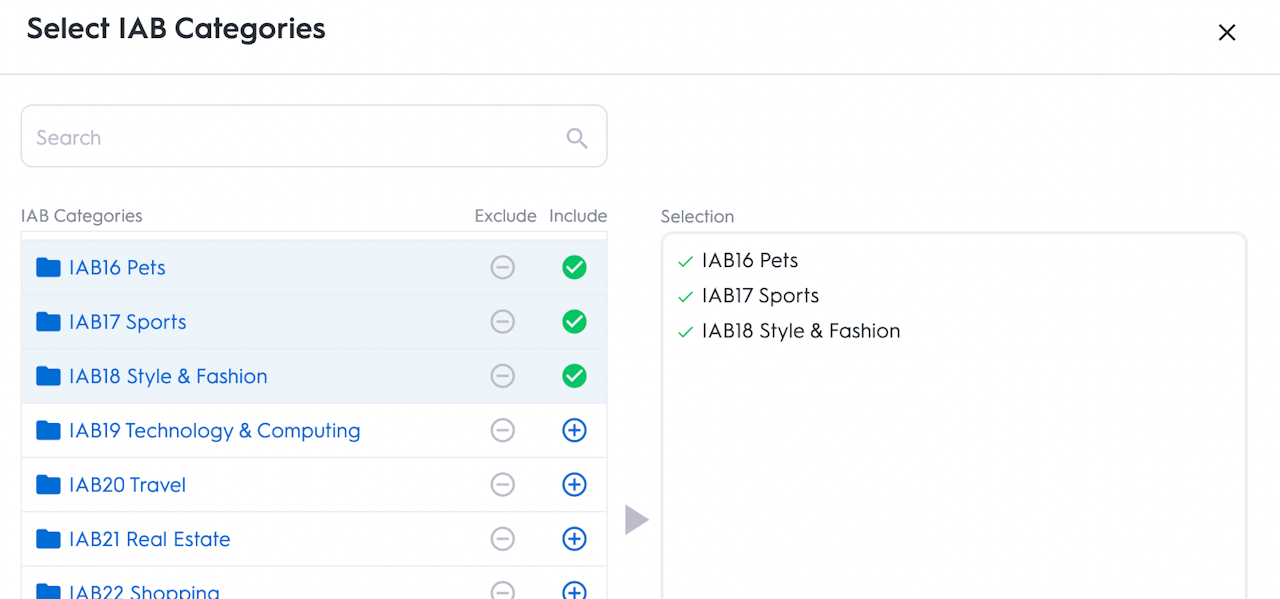

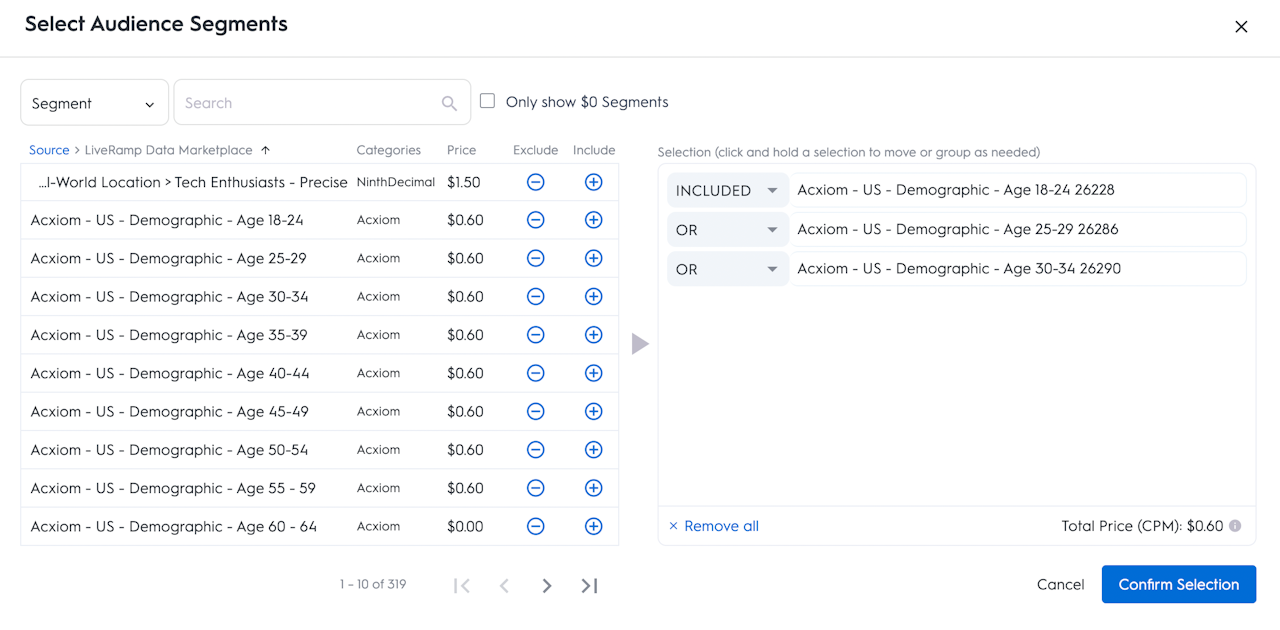
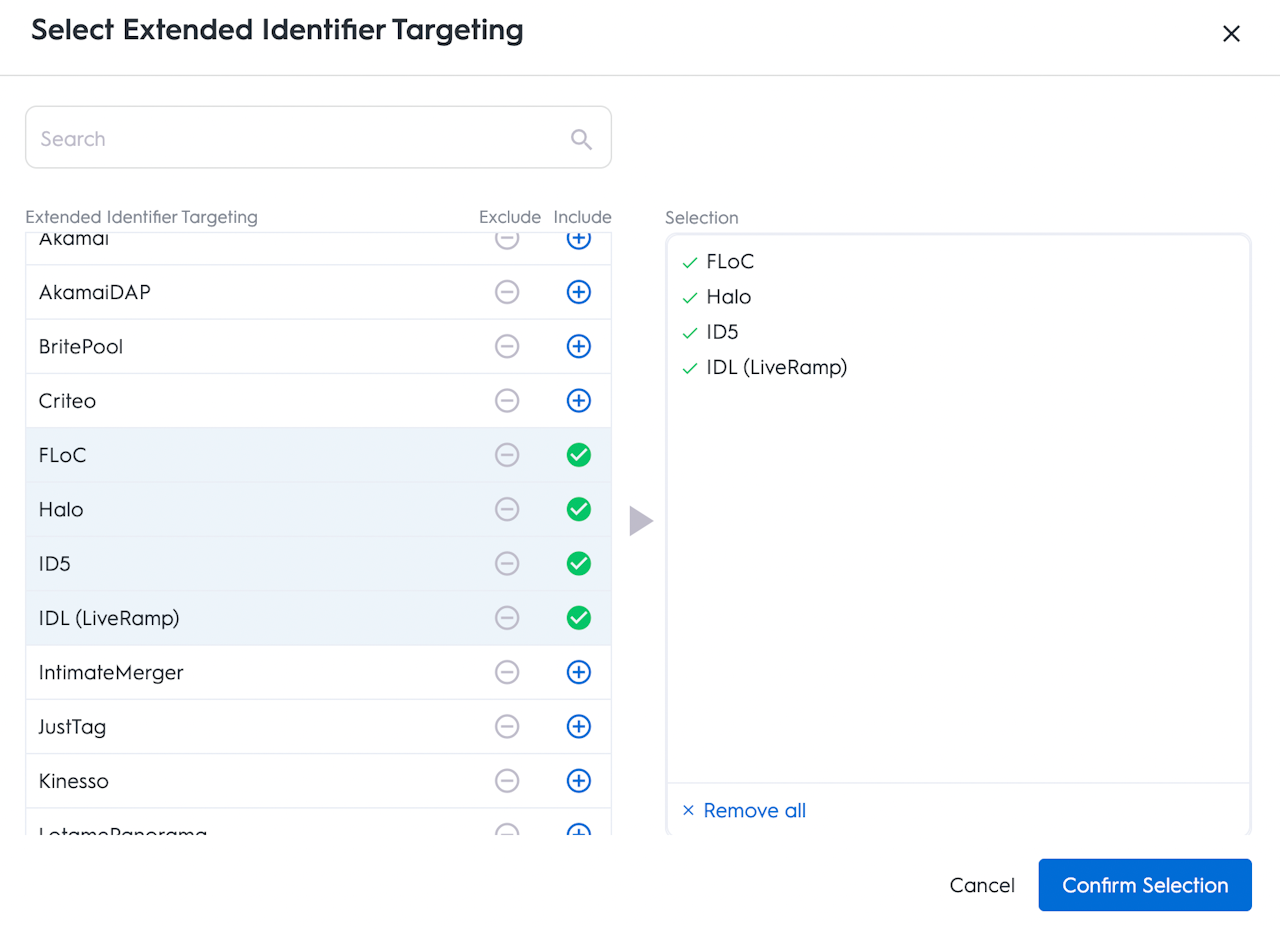
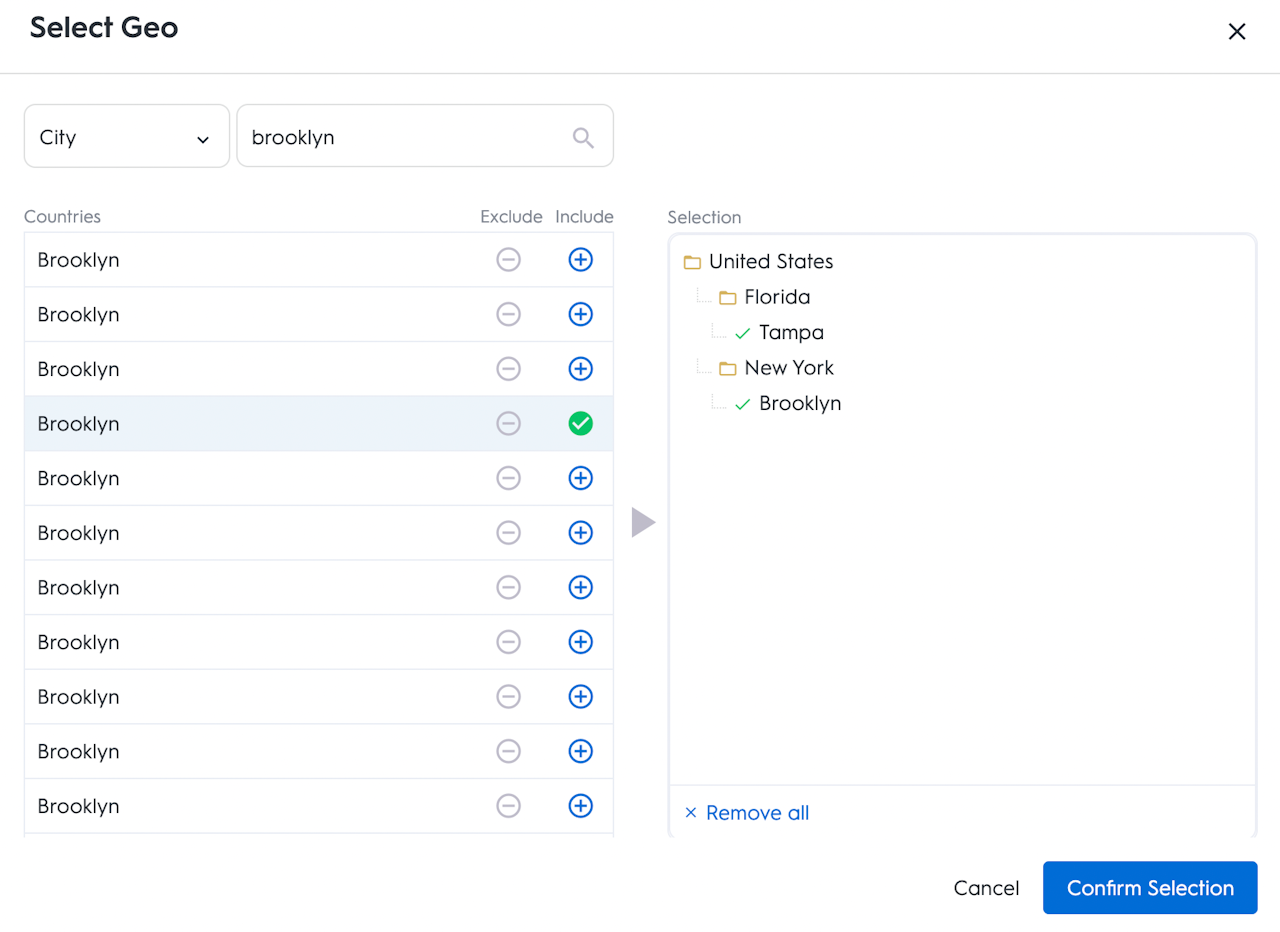
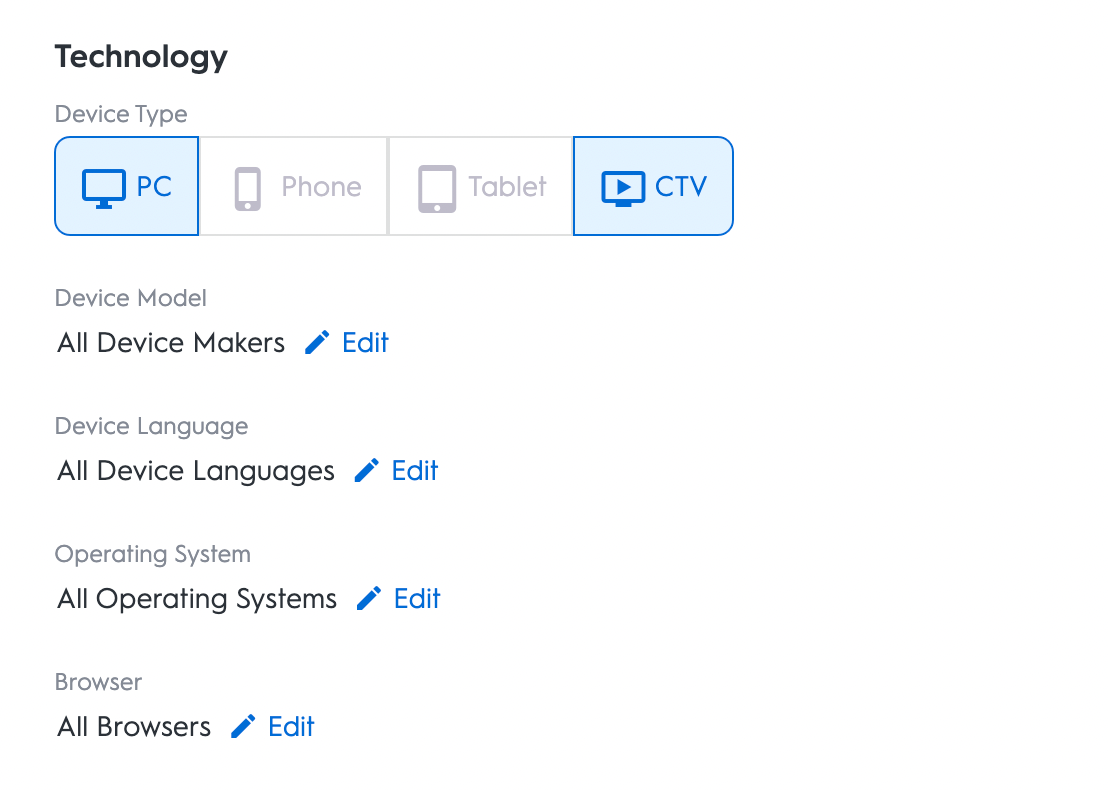
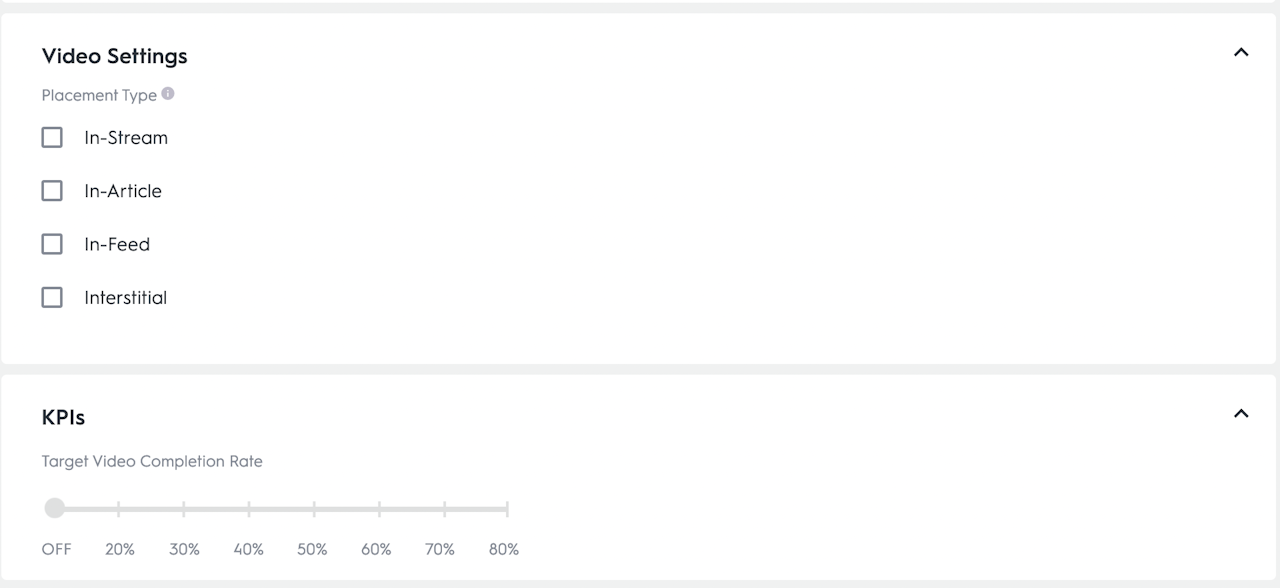
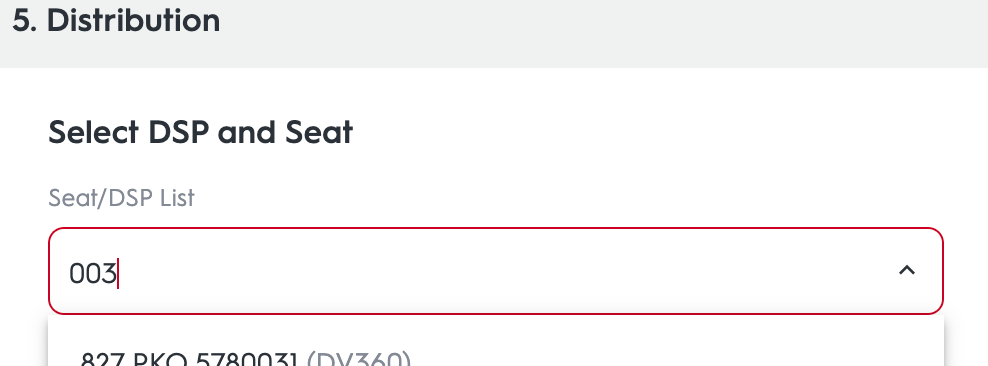

New Deal Setup
The following steps will guide you through the deal creation process.

Launch the Packaging Workflow
Log into the Commerce Grid UI. From the left-hand menu bar, select "Trading" and then select "Supply Packages".

Create New Package
Select "Create New Package" to begin selecting your deal parameters.
You can also filter, view and edit any existing deal packages from this screen.

Section 1: Add your deal details
The first pane of the deal packaging workflow will prompt you to enter basic details about your deal. These fields include:
Package Name: The name of your deal as it will appear in the UI
Start/End Dates: Your chosen time-frame during which buyers will be able to access your deal. You can select the "No End Date" box if you'd like your deal to remain available to buyers indefinitely. (Note: start and end dates are tied to the time-zone selected for your account under the "Settings" tab).

Section 1: Bid logic
Section two of the packaging workflow allows you to set the bid logic your deal will follow.
Bid logic refers to the auction dynamics you'd like buyers to engage in when bidding on your deal. Your options here include:
Dynamic: This setting will allow buyers to bid and clear at a range of prices as long as those prices are above your floor price. Recommended for ‘always on’ deals, particularly when there are multiple bidders with access to a single deal.
Optimal Price Discovery: When choosing a dynamic bid login, you'll have access to Commerce Grid's Optimal Price Discovery (OPD) tool. OPD is designed to help publishers maximize CPMs by comparing bidding opportunities against historical win data to make a prediction on the optimal bid price needed to win the auction.
Static: Requires buyers to bid at an exact price. Most common selection for 1:1 deals.

Section 1: Categories
Categories allow you to select your deal's inventory and media types settings.
Inventory Type Options:
Websites: Select to isolate your deal's inventory options to traditional desktop or mobile web.
In-App: Select to isolate your deal's inventory to mobile app.
OTT: Select to isolate your deal's inventory to Connected TV and OTT
Media Type options:
Websites
Display: Isolates your deal to banner ads
Video: Isolates your deal to video ads
Native: Isolates your deal to Native ads
In App
Display
Video
OTT
Video

Section 2: Inventory
Section 2 of the deal packaging workflow enables you to isolate your deal to a subset of your inventory.
Note: Depending on the Categories you selected in the previous step, the platform will filter available inventory groups, ad units, and domains to mirror your selections.
Inventory Groups: Select from the inventory groupings you've created in the "Inventory Groups" section of the Inventory Management module.
Ad Units: Select from ad units you have previously set up under your inventory groups in the "Ad Units" section of the Inventory Management module.
Domains: Select from specific domains you have previously setup in the "Domains" section of the Inventory Management module.
Upstream Deal ID: If you have another Deal ID you've created in a different SSP, you can add that Deal ID here to pass that traffic into your Commerce Grid deal ID.
Note: If you make no inventory selections, your deal will run across all of the inventory you are monetizing via Commerce Grid.

Section 2: IAB Categories
This section allows you to include or exclude IAB content categories to pass in your deal, informing buyers about the nature of your content.
Selecting IAB categories can help increase bid rates, however, they are not required to complete deal setup.

Section 3: Audiences
The Audiences section allows you to control parameters around the users being passed in your deal package. These settings are not required, but can help increase the value of your deals for buyers.
Here you have two targeting options:
Segment Targeting (leverages the Commerce Grid Data Marketplace)
Extended Identifier Targeting
Read on to learn more about these two options.

Section 3: Segment Targeting (Data Marketplace)
Audience Segments: Selecting "edit" here will take you to the Commerce Grid Data Marketplace, where you can select from a broad range of first- and third-party data segments to apply to your deal. Applying data to your deals that align with advertiser's needs can make your deals more attractive and valuable to buyers.

Section 3: Extended Identifier Targeting
Extended Identifier Targeting: Extended identifier targeting allows you to include or exclude specific cookie namespaces and alternative ID solutions to pass in your deal via the Prebid User ID Module
As buyers increasingly prefer to transact in specific IDs, ensuring your deal includes the IDs that align with your target buyer's needs can be beneficial.
Here are the available IDs to select from:
Admixer |
Akamai |
AkamaiDAP |
BritePool |
Criteo |
FLoC |
Halo |
ID5 |
IDL (LiveRamp) |
IntimateMerger |
JustTag |
Kinesso |
LotamePanorama |
Merkle |
Navegg |
Neustar |
NextRoll |
NonID (LiveIntent) |
Parrable |
PubCommon |
QuantCast |
SharedID |
Tapad |
Unified ID v1 (TTD) |
Unified ID v2 (TTD) |
Verizon |
Vodafone Telco |
Yahoo ConnectID |
netID |

Section 4: Geo Targeting
In section four, you will find multiple targeting options to refine who sees your deal and where.
The first of these options is Geo Targeting. Here, you can isolate your deal to a region:
Country
State ("Subdivision 1")
City

Section 4: Technology Targeting
Here, you can isolate your deal to specific technology settings, such as browser or device type from which your traffic are accessing your inventory.
Your options include:
Device Type: The device your traffic uses to access your inventory (PC, Phone, Tablet, CTV). Please note that the inventory selections you made earlier superscede your device settings.
Device Model: Isolate to a specific device model (i.e. Apple iPhone vs. Google Pixel).
Operating System: Isolate to a specific operating system (i.e. Microsoft vs. Android ).
Browser: Isolate to a specific browser (i.e. include Safari traffic, or exclude Chrome traffic).

Section 4: Settings & KPIs
Settings and KPIs allow you to set parameters around the performance of your deal.
Based on the media type you selected earlier, the KPIs available in this section will change.
For example, if you’ve selected Video, you’ll see Video Placement Type Targeting and VCR Target as KPI options.
Likewise, for Display and other inventory types, you can choose either MRC or GroupM for viewability.

Section 5: Distribution
To complete the deal packaging workflow, you will identify which DSP seat you'd like to distribute your deal to.
You will have set up DSP seats in the "Seats" section of the Trading module.
Here you can search for a seat by the seat ID, or by the DSP name.
After making your selection click "Create Supply Package and Deal" to finalize the process.
You will be able to access your Supply Package and copy the Deal ID to provide to buyers from the "Supply Packages" view in the Trading module.

